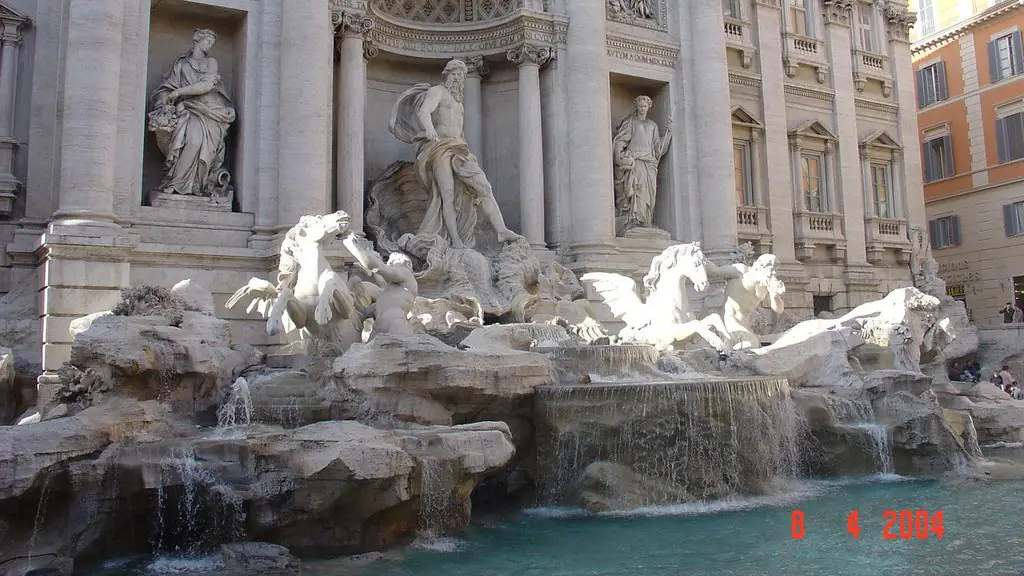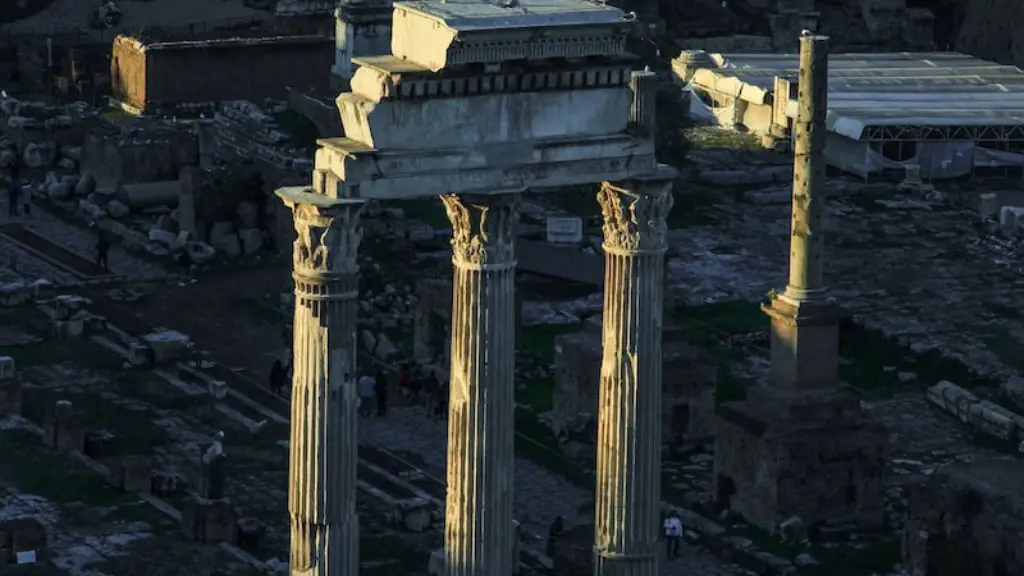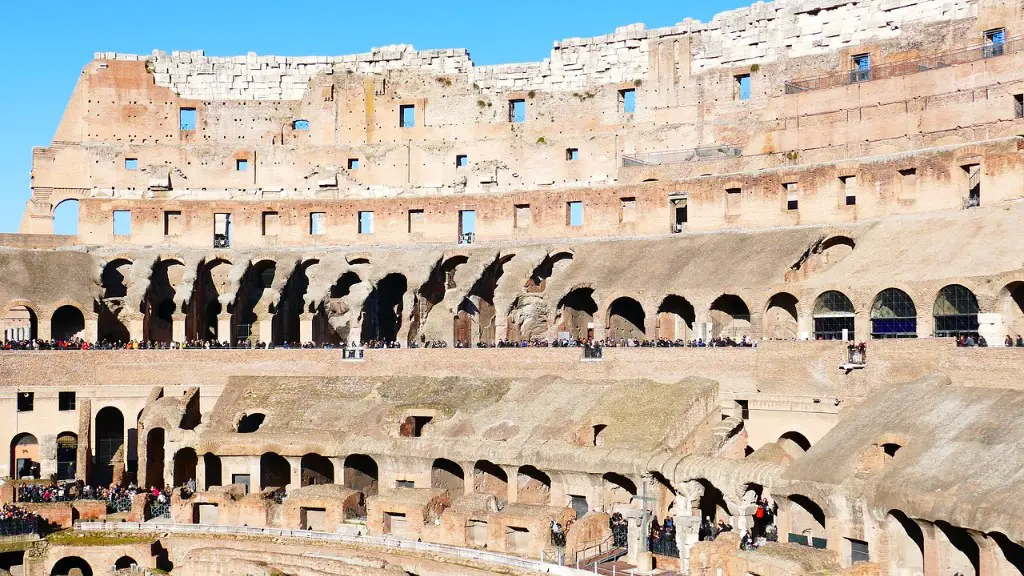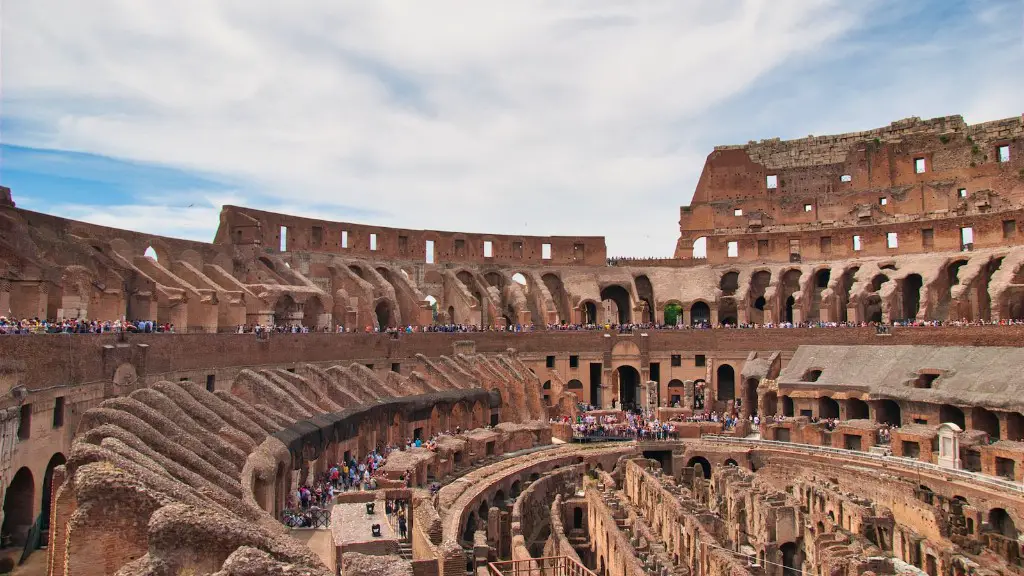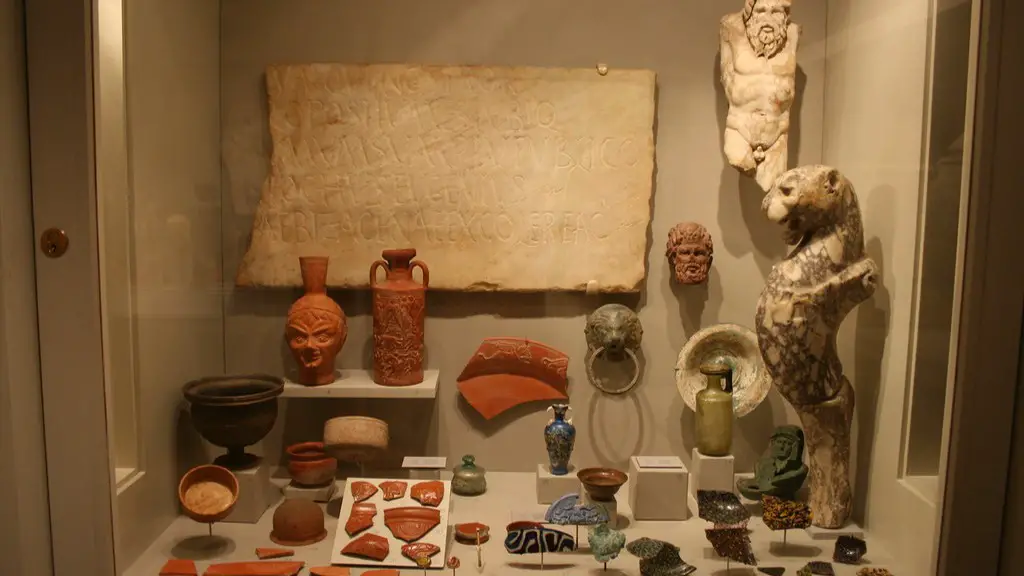Legends of ancient Rome’s culture offer an intriguing glimpse into the religious practices and beliefs which preceded the prevalence of Christianity. Ancient Rome, What religion was ancient Rome before Christianity, like other cultures of the past and present, had its own distinctive beliefs, values and religious practices. Ancient Rome was a highly religious society with gods and goddesses, rituals, temples and priestly authorities. Despite the rise of Christianity, many Pagan religious practices persisted in Rome.
Before Christianity, the most prominent religious belief system in ancient Rome was Polytheism, which is defined as the belief in many gods or goddesses. As Polytheism is by its nature distinct to each cultural group, the gods and goddesses the Romans recognized were different from the gods and goddesses of other ancient cultures. In ancient Rome, the gods were considered to be representative of geo-political power and economic prosperity. Ancient Romans believed that the gods were active and involved in the daily lives of individuals and society as a whole. They prayed to the gods and goddesses to ensure good fortune and to ward off calamity.
The rituals of religious observance in ancient Rome were varied and often elaborate. Ancient Roman priests or religious officials conducted rituals to honor their gods and goddesses. These rituals, known as sacrae, included ritualistic practices such as animal sacrifice and ecstatic dancing. The temple priests, known as flamines, led the worshippers in prayer and meditation in honor of their gods. Ancient Romans also practiced augury, which involved examining the flight of birds to divine the will of the gods.
In addition to the priests, ancient Rome also had a pantheon of religious officials referred to as ‘augurs’. These augurs were responsible for reading the signs of the gods, such as lightning flashes and the movements of animals, to interpret the divine will. Through these practices, the ancient Romans believed that they could appease the gods and protect themselves from harm and misfortune.
Ancient Rome also had its own set of priestly orders that oversaw religious observances. The two main priestly orders were the Vestal Virgins, devoted to the goddess Vesta and the Pontifices, a group of high priests that not only conducted rituals to honor Roman deities but also interpreted laws, including religious laws.
In spite of the rise of Christianity, ancient Roman religious practices endured throughout the Roman Empire during the early Christian period. However, during this time, Pagan practices were seen as superstition and ‘backward’. Despite this, many elements of ancient Roman religious beliefs and practices survived and were absorbed into the Christian church.
The influx of Christianity into the Roman Empire drove the old religion further into obscurity, and it wasn’t until the Renaissance in the 16th century when scholars and archaeologists began to explore the religion of ancient Rome in detail. In the modern era, scholars continue to study the beliefs, practices and gods of ancient Rome, bringing to light many of the religious rites and customs of the ancient Romans.
Influence of Ancient Roman Religion on Modern-day Society
Ancient Rome was an incredibly influential part of world history, and despite the prevalence of Christianity today, its ancient religious beliefs and practices continue to influence modern-day society. Ancient Roman religious customs and rituals still influence celebrations and holidays, including those related to Christianity. For example, Christmas, Easter and Halloween are all derived from customs and festivities related to ancient Roman religion.
Although many of the gods of ancient Rome are no longer worshipped, many people continue to recognize their iconic symbols and statues. The image of the winged victory goddess, Nike, is still used to represent success and athletic prowess, while the Roman god of war, Mars, is still recognized as a symbol of bravado and power. In addition, the Roman gods of love, Venus and Cupid, remain immortalized and are still used to convey feelings of romantic love.
Finally, the legacy of ancient Rome can still be seen in the words used in the English language. Numerous Roman gods and goddesses, such as Jupiter, Mars and Venus, have been incorporated into the English language, with their symbols and depictions being used as terms for common objects or ideas. For example, the Latin term for Jupiter, Iuppiter, is still used as the root for words like jovial and jubilant.
Characteristics of Ancient Roman Beliefs
The beliefs of ancient Rome were largely based on the concept of ‘animism’, which is the belief that the world was inhabited by powerful, spiritual forces. Animism was central to the spiritual beliefs of the ancient Romans, who believed in a variety of gods and goddesses who were responsible for the welfare of humanity and all of creation.
In addition, ancient Romans were polytheists and believed in many gods, each of which had a distinct purpose and role. Ancient Romans studied omens and portents, believed in omens, and developed cults around certain gods, such as Apollo and Venus. Ancient Romans also believed in the power of sacrifice and ritual, often participating in elaborate public ceremonies in the hope of appeasing their gods.
Although ancient Romans thought of their gods and goddesses as separate entities, they were also regarded as being interlinked and part of a larger divine force. As such, ancient Romans believed that if the gods were kept content, the world would be in balance and prosperous.
Decline of Ancient Roman Religion
The decline of ancient Roman religion began with the rise of Christianity in the 4th century AD. As Christianity began to spread, Paganism and many of the ancient Roman customs and beliefs began to decline. In 391 AD, the Emperor Theodosius I declared Christianity the official religion of the Roman Empire, effectively banning Paganism and its practice.
The ban on Paganism combined with the destruction of ancient Roman temples and other symbols of the old religion eventually caused it to fade into obscurity. That said, remnants of ancient Roman religion still remain, such as its gods and goddesses, rituals, and religious concepts which inspired the beliefs of Christianity.
Intersection of Ancient Roman Beliefs and Christianity
The two main religious systems in ancient Rome were Paganism and Christianity, a large section of which believed in the same gods and goddesses as their Pagan counterparts. This similarities between the two faiths led to the development of a shared religious culture, which incorporated elements of both belief systems.
The intersection of Paganism and Christianity in ancient Rome resulted in the development of a unique religious culture, which involved the blending of certain aspects of both religions. For example, the veneration of saints, which is a major component of Christianity today, can be brought back to the ancient Roman belief in saints and the honoring of their memory.
In addition to the veneration of saints, other Pagan religious practices, such as augury, divination and the honoring of the gods and goddesses, also became part of the Christian religion. These practices also fused with more recent Christian elements, such as the veneration of the saints and the rise of the Bishop of Rome as the head of the church.
Impact of Ancient Roman Religion on Modern Society
The impact of ancient Roman religion on modern society can still be seen in the customs, icons and concepts that have survived over time. Ancient Roman gods and goddesses are still honored today in holidays such as Valentine’s Day and Easter, which draw upon the ancient Roman religious rituals of offering sacrifice, purification and honoring the gods.
The ancient Roman religion has also had a lasting impact on modern culture and language, with a significant number of symbols, words and concepts associated with the belief system being absorbed into the modern day. For example, many modern words and phrases, such as ‘sub-rosa’, ‘forum’ and ‘pantheon’ are derived from the Latin language and cultural heritage.
In addition, the concept of ‘fas’, or divine law, has its roots in ancient Rome and is still used in the legal systems of some countries today. Finally, the study of Roman religion has provided considerable insight into the beliefs, values and practices of ancient cultures and the way religion influences individuals and societies.
